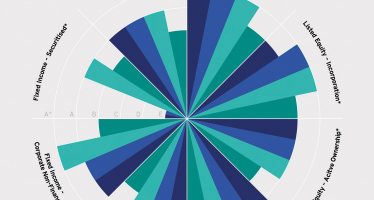Inflation – Beyond the Headlines and Beyond the Borders: Specialised Investment Research and Analysis from PGM Global Inc.
Chinese PPI: A hero of Our Time
Chinese Producer Prices (PPI) are an important indicator for DM equities and, indeed, for global inflation. Since China joined the WTO in 2001 and became the world’s workshop, Chinese PPI has tended to lead U.S. CPI.
It may come as a surprise, but for various reasons, PPI in China’s industrial sector is actually in deflation! Chinese industrial producer prices are strongly linked to Chinese export prices, which then filter into the rest of the world’s CPI. If President Xi relaxes his zero-COVID policy, the resurgence of Chinese exports could help dampen global inflationary pressures and support corporate profit margins. This, in turn, would help the Fed and other DM central banks engineer the elusive soft landings they are all striving for.
Chinese industrial inventory growth has surged as working capital (proxied by undiscounted bankers’ acceptances) grew strongly in 2020. This suggests that the portion of inflation that supply chain disruptions have driven can be mitigated if China were to open up more fully. Low vaccination rates and the poor efficacy of China’s COVID vaccines will delay any re-opening. However, the spectacle of Chinese households refusing to pay mortgages for unbuilt properties is a sign of fatigue, if not protest over the combination of slower growth and COVID restrictions.

Part of the slowdown in Chinese PPI is a function of lower commodity prices as investors fret over demand destruction due to the global economic slowdown. To a certain extent, this seems misplaced, particularly concerning energy prices. Increased backwardation in oil futures suggests looming shortages, despite the decline in front-month prices.
While we think oil prices should be fundamentally higher, this view doesn’t necessarily suggest that Chinese PPI will rise and the country’s ability to export disinflation will falter. China benefits from the sharp discount in Russian Urals crude vs. benchmark oil prices. In addition, Chinese refiners—including the two largest, state-owned ones—have fat profit margins due to the discount and can ensure producer prices remain muted.
Relatively cheap energy prices and the broad downturn in industrial commodity prices should continue to weigh on Chinese PPI.
There are two main reasons why investors should care about Chinese PPI. International and especially U.S.-focused equity investors are fretting over the outlook for corporate earnings. Earnings can be decomposed into profit margins and sales growth. Sales growth is now rolling over sharply. Profit margins remain at near four-decade highs; there are good reasons to ask how long this can persist.
Between 1950 and China’s ascent to the WTO in 2001, U.S. profit margins tended to peak before wage gains, and precipitated recessions. This changed—coincidentally or not—when China joined the WTO and became the world’s factory. China exported disinflation, pushing down prices for U.S. consumers and widening the profit margins of U.S. firms. If Chinese lockdowns ease, the country can spur another round of disinflation, which would help both U.S. firms and the Fed.

Perhaps a more interesting reason investors should care about Chinese PPI is the nexus of China’s industrial plans and global competitiveness. China’s desire to become a world leader in high-tech products is hardly news; however, its strategy might be. China has been using its large, tech-hungry domestic market to scale production and boost its global competitiveness. Chinese firms have a dominant market share at home. Lower energy costs and PPI, in general, will help Chinese tech hardware firms compete internationally.
Europe’s tough stance on Russia and impractical energy policies have exacerbated the bloc’s broader economic malaise. This is particularly true of Germany, which is inching ever closer to an energy catastrophe and electricity rationing. As recently as 2020, the UN had ranked German Industry the world’s most competitive, with China in second place. The current macro trajectory suggests China can close that gap.
We have been fairly optimistic about Chinese tech for a few months now. Recently, the internet platform companies, which have a heavy weighting in the KWEB ETF, have done relatively better than the tech-hardware heavy firms (CQQQ). This makes sense given the government has been relaxing, however unevenly, regulation on the platform companies. However, as far as future growth is concerned, we continue to think the hardware-focused firms will do best, as they are of strategic importance to the CCP and continue to benefit from increased investment.
Bottom Line
Chinese producer prices are easing, in what could be a boon for global consumers, profit margins and DM central banks. A lot will depend on President Xi’s commitment to the zero-COVID policy. The PPI trends are also supportive of Chinese equities, and especially Chinese tech hardware firms. This is particularly true when contrasting the outlook for China with that of Germany. i
About PGM Global Inc.
PGM Global Inc. is an established player in international capital markets, offering securities trading, global macro research and transition management services to institutional investors. For over half a century, PGM Global Inc. has provided expertise in execution and advice to institutional clients worldwide. We bring industry-recognised capabilities to the table – including specialised investment research and analysis, a top-ranking global trading desk and state-of-the-art technology – to help our institutional clients worldwide excel in the capital markets.
PGM Global Inc. is Winner of Best Global Portfolio Strategy Team North America 2021 & 2020 and Winner of Best Transition Management Team North America 2021, 2020 & 2019.
Find out more at www.pgmglobal.com.
Disclaimer
This report was prepared for circulation to institutional and sophisticated investors only and without regard to any individual’s circumstances. This report is not to be construed as a solicitation, an offer, or an investment recommendation to buy, sell or hold any securities. Any returns discussed represent past performance and are not necessarily representative of future returns, which will vary. The opinions, information, estimates and projections, and any other material presented in this report are provided as of this date and are subject to change without notice. Some of the opinions, information, estimates and projections, and other material presented in this report may have been obtained from numerous sources and while we have made reasonable efforts to ensure that the content is reliable, accurate and complete, we have not independently verified the content nor do we make any representation or warranty, express or implied, in respect thereof. We accept no liability for any errors or omissions which may be contained herein and accept no liability whatsoever for any loss arising from any use of or reliance on this report or its contents.
You may have an interest in also reading…
ESG in Company DNA Makes Responsible Investment as Obvious as ABC for Invesco
For more than 30 years, Invesco has demonstrated its commitment to responsible investing by actively encouraging ESG practices across every
Online Gaming Sector Quick to Appreciate Role of AI to Reduce Risk — and Empower Growth
B2B GAMING SERVICES: WINNER Best Online Gaming Platform Solution Europe 2023 Gabriel Chaleplis, founder of B2B GAMING SERVICES, commenting on
EXIM Hungary: Hungary’s Export Expert has Strong Focus on Finance and Foreign Market Expansion
EXIM, the official export credit agency of Hungary, is the only domestic bank and insurer specifically focusing on international trade,



















































































